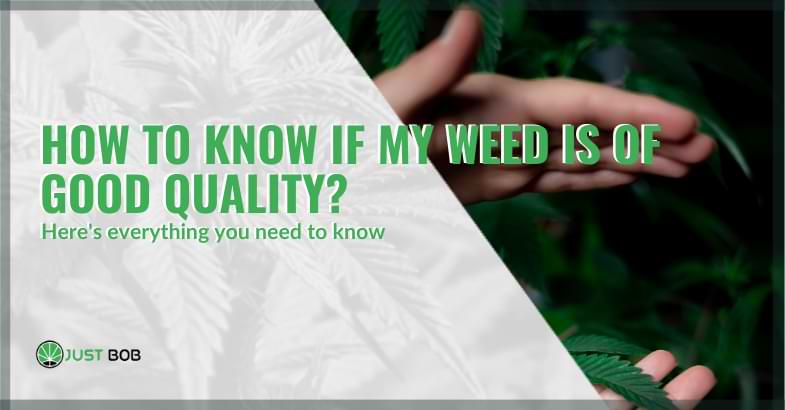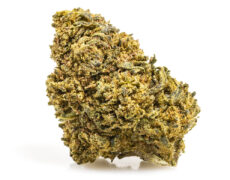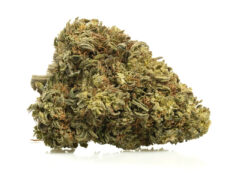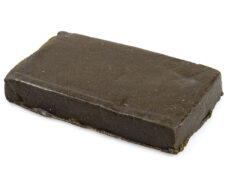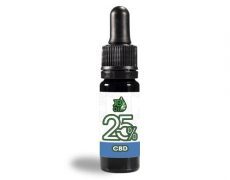Modified on: 30/10/2023
Weed of good quality: these the features you need to take into account
A quick glance, a swipe under the fingertips, and we have already gathered the right information.
But how can we be sure that the weed we’re about to smoke is of good quality?
In this article, we’ll explore the characteristics that determine the quality of cannabis, so you can ensure you’re getting the best possible experience.
#1 Colour
More than colour is vibrancy. High-quality CBD flowers have:
- A bright appearance
- A sign of good cultivation
- A proper storage
They are festively prepared, attractive, you cannot take your eyes off them. In contrast, low-quality buds have a dull, unpleasant appearance. That you do not want to smoke them.
At all.
In order to understand the real quality of the weed, the characteristic colour of the inflorescences should also be assessed: if really good, the weed should appear green in colour, regardless of shade and declination, but never brownish tones. This shade can in fact vary from the lightest and coldest green to dark and intense green, accompanied by shades that generally range from purple to pinkish and golden.
It is also relatively simple to understand whether the top comes from a healthy plant: if the shades appear purple, pink or bluish, this guarantees its quality. If, on the contrary, rust red, light brown or yellow predominate, the plant may have been affected by pests or mould, or not cultivated properly.
If the inflorescences appear slightly bleached, irrespective of the presence of trichomes, they may have been the victim of a slight burn – an unfavourable growth condition that occurs when the plant is subjected to very high light intensity. The quality of this plant material will consequently be poor, as will the experience of inhalation or vaporisation.
Therefore, buds that are brown, rusty, yellow, red, or whitish in colour should be avoided. Quality cannabis is generally green in colour and has a wide range of shades to ensure a fully satisfying intake experience.
#2 Trichomes
Buds covered with trichomes are quality buds. Why? Because the goal of properly cultivated cannabis is to produce inflorescences rich in mature trichomes, the small crystals visible on their surface, as they are the repositories of cannabinoids and terpenes.
But be careful.
Trichomes must reach the right ripeness. Torch in hand, and if they look transparent, they are immature. On the contrary, ripe trichomes take on a whitish to amber hue.
But let me make that clearer to you.
The density of the trichome is relatively easy to distinguish with the naked eye: quality inflorescences will be completely covered with them while, if they are of poor quality, they will consist of small, empty or rather thinned surfaces. On the contrary, the maturity point of the trichome appears difficult to assess without the aid of a magnifying glass capable of showing its colour and size.
What generally determines the poor quality of the weed is the premature or hasty harvesting of the inflorescences or, on the contrary, their over-ripening, especially in the case of sativa hemp, which has longer flowering periods.
Here, the characteristic colour of the glandular trichome head is the most effective indicator of maturity: ideally it should appear milky white, slightly amber-coloured. If it is lighter, it indicates that the inflorescences have been harvested too early with respect to maturity. If it is too amber-coloured, maturity has, on the contrary, lasted too long, in both cases impairing the quality of the plant material obtained.
So, the bottom line?
It is necessary to avoid inflorescences that do not appear “icy”, i.e. studded with trichomes resembling a light winter frost: in this case, they will not be sufficiently ripe and therefore poor in cannabinoids.
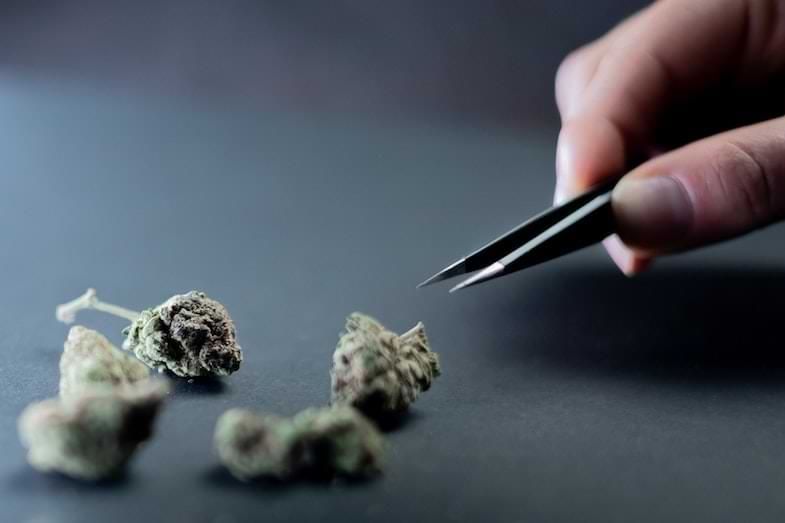

#3 Pistils
Pistils, are the female sexual organ of cannabis. Filaments stretching skywards, waiting to receive the male pollen.
And not only that.
They indicate the progress of cultivation. In the first stage of flowering, they will be brightly coloured – they are still immature. We give our buds the time they need. Weeks pass. And they turn an orange colour. This is it.
Harvesting should take place when, for the most part, the pistils are dark orange.
#4 Presence of pests and moulds
It is easy to understand that quality cannabis has inflorescences that are completely free of mould and parasites, a drawback that may occur if the marijuana under examination is of dubious origin.
Mould tends to manifest itself as a sort of greyish or whitish powder depending on the fungal pest. Insects such as whiteflies, mites, aphids, and midges, on the other hand, can release faecal matter on the inflorescences, obviously impairing their quality and the quality of its products, such as legal hash. It goes without saying that the plant matter in both cases cannot be taken up in any way.
It is also necessary in this case to avoid inflorescences that have been corrupted by mould or have faecal matter deposited on them by mites and parasites.
Both neophytes and regular cannabis users must be aware that healthy, well-grown plants are the only ones that can offer good, high-quality weed, as they are more likely to produce inflorescences that are particularly rich in cannabinoids and therefore more satisfying to use.
It is important to always be extremely careful when purchasing, preferring safe and reliable sources of plant material obtained from cultivations that have been dutifully cared for according to all the required protocols, and preferably certified.
#5 The presence of seeds
The presence of seeds is never a good sign. From sinsemilla, a high-quality seedless weed. But why?
Let us return to pistils for a moment.
When the female sexual organ of cannabis receives the male pollen, it initiates fertilisation. From the production of resin, the plant directs its energies towards seed production. The female cannabis uses the absorbed resources for reproduction. In doing so, the buds do not reach maximum potency and the weed drops in quality.
So… Do not leave your female seedlings with male plants. They will mate without a second thought.
#6 Presence of hermaphroditic traits
Quality weed comes from female cannabis plants, as male cannabis plants only generate marijuana seeds and are therefore unsuitable for consumption.
If the plant is subjected to stress or if it is not cultivated properly or for excessively long periods of time, it may exhibit hermaphroditic traits, an undesirable trait as it produces inflorescences of very low quality.
This stress causes the plant to self-pollinate in an attempt to reproduce, at the very moment when it perceives its own death as imminent, thus generating hermaphroditic traits. The resulting inflorescences represent a true hybrid: they may appear rich in trichomes, present the characteristic aromas, but also constitute seeds exactly as in the male genetics.
It goes without saying that they cannot be smoked as they are particularly unpleasant.
#7 Inflorescence structure
As a general rule, cannabis indica inflorescences should appear tight and dense, while cannabis sativa buds are lighter and fluffier.
However, if plants are cultivated carelessly, indica inflorescences may take on a sativa-like appearance, appearing open, corrugated and with the small stems that generally hold them together and compact, visible. Hybrid strains tend to take on both characteristics.
One should be aware here that the inflorescences of sativa strains are generally covered in orange/red pistils, thus differentiating them from the indica variety. For reference, sativa cannabis buds are generally covered with more pistils (small orange/red hairs) than legal indica marijuana buds, spread evenly over the entire inflorescence with no thinning spaces or none at all.
So, what should you avoid?
It is important to avoid buds with visible, open stems, and too little density. Sativa inflorescences are compact and dense, whereas in sativa varieties they are softer and richer in pistils.
#8 Trimming for quality inflorescences
Time to harvest. And if you are allowed to cultivate cannabis, you have probably been waiting for nothing else. The temptation is nothing short of uncontrollable but, alas, the buds will have to be trimmed of excess leaves first. In technical jargon, we are talking about trimming.
A delicate operation which, for quality buds, will be entrusted to trimmers. As it used to be done in the past. Without the use of machinery, which could damage and spoil the inflorescences.
Moral?
Avoid buds with foliage or mechanically removed. Let’s put it simple: if they are of good quality, it would be advisable to remove the excess plant matter always by hand, without using machines or mechanical tools, as cutting tools tend to undermine their integrity by corrupting the trichomes present.
Therefore, mechanically cleaned inflorescences should be avoided as well as those still with foliage, both of which are indicators of hasty, coarse and inaccurate cultivation practices.
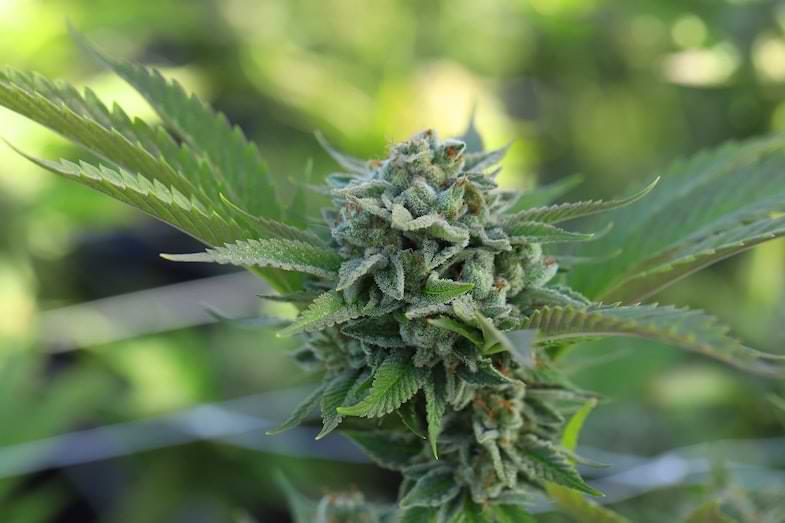

#9 Consistency
Touch comes to our aid. Quality buds will be plump, compact, and definitely sticky.
Dense, luscious buds, which, once shredded, open up to almost double their size. In contrast, poor quality buds are airy and not very sticky. Disappointingly, once chopped, they produce small amounts of vegetable matter.
But wait, there is another test we can do.
We take a top between our fingers and crush it, again carefully. The dense ones will resist and return to their original shape. The airy ones, alas, will collapse in on themselves.
#10 Aroma
Take your buds, pass them under your nose. A wave of fragrance will sweep over your nostrils. Breathe in. Make those unmistakable fragrances your own.
Terpenes are the aromatic oils that give cannabis its incredible aromas. When you open your stash you will literally be overwhelmed by them.
Fragrance and quality are not directly related, but buds that smell nothing or are vaguely reminiscent of hay is a sign of poorly grown or poorly stored weed. Buds that smell of hay or have no discernible odour by smell should be avoided. The aromatic intensity is closely related to the potency of the herb and its terpene content: if it appears low, the marijuana will consequently not be of the required high quality.
The smell, as well as the aroma emanating from the cannabis inflorescences, when cultivated according to all the necessary criteria to guarantee objective quality, should be pungent and easily identifiable by the characteristic ‘skunky’ smell, which generally varies from sweetish to earthy to even resembling diesel, due to the massive presence of terpenes.
But that’s not all.
Through the aroma it is also possible to identify the variety of cannabis being tested quite easily: if it has intense aromas reminiscent of chocolate or coffee, it is cannabis indica. Conversely, if the scents are reminiscent of citrus fruits and have a certain degree of acidity, this is cannabis sativa.
In general, hybridised strains tend to present a true aromatic mix assumed by both genetic profiles.
#11 Flavours
We have arrived at the long-awaited moment. If it is accompanied by a trail of fruit and sweets, you are smoking medium or high quality weed.
Conversely, if it is tasteless, leaving a strong burning sensation in your throat, even worse if it is followed by a coughing fit, you don’t need to be told what it means. It is low-quality weed.
#12 The colour of ash
You are smoking your beloved legal weed. After the first two, three puffs, it’s time to smoke. Amongst the clouds of smoke, take a few moments to check the colour of the ash.
Its light colour is synonymous with quality weed. In contrast, the dark colour of the ash may be caused by heavy fertilisation.
Conclusions
In this article, we gave you some advice to recognize good quality weed. As you have read, it’s almost simple to figure it out. In any case, you should always purchase legal weed only from certified and professional stores, whether they are offline or online.
So, visit Justbob and discover the weed of the best quality.
See you soon!
💡Takeaways on how to recognize good quality weed
- Good quality weed can be identified by its appearance, colour, trichomes, pistils, inflorescences, the presence of pests and moulds, texture, aroma, flavours, and the colour of the ash after smoking it.
- The appearance of the weed is important: high quality buds have a bright, vibrant, and pleasant appearance. Low quality buds have a dull and unattractive appearance.
- The colour of the inflorescences of high-quality herb should be green, regardless of shades, and never tending towards brown. Pistils should be dark orange, indicating maturity.
- Trichomes, small crystallisations found on the surface of herb inflorescences, are the repository of cannabinoids and terpenes, and their density and maturity determine the quality of the herb. Trichomes that are too immature or too mature indicate low quality.
- The presence of pests and moulds on the cannabis compromises its quality. The inflorescences should be completely free of mould and any kind of pests.
- The consistency of the weed is a good indicator of quality. High quality buds will be thicker and sticky, while low quality buds will be light and not very sticky.
- The aroma is another important characteristic. The smell should be pungent and easily identifiable by the characteristic ‘skunky’ odour ranging from sweet to herbaceous.
- Finally, the colour of the ash that remains after smoking the weed is a good indicator of quality. A light-coloured ash indicates good quality, while a dark-coloured ash may indicate heavy fertilisation.
- Always remember to buy legal weed from certified and reliable sources, both online and offline, to ensure a consistent and satisfying quality of smoking experience.
FAQ on how to recognize good quality weed
What are some characteristics that indicate good quality weed?
Good quality weed is typically vibrant in appearance, with a bright and attractive colour. The buds should be covered in mature trichomes, which are small crystals visible on their surface and are the repositories of cannabinoids and terpenes. The inflorescences should be completely free of mold and any kind of pests, and the consistency of the weed should be thick and sticky. The aroma should be pungent and easily identifiable by the characteristic ‘skunky’ odour ranging from sweet to herbaceous. Finally, a light-coloured ash remaining after smoking the weed is a good indicator of quality.
What is the ideal color for the inflorescences of good quality weed?
The ideal colour for the inflorescences of good quality weed is green, regardless of shades, and never tending towards brown. The presence of purple, pink, or bluish shades indicates that the inflorescences come from a healthy plant and are of good quality.
What should be avoided when selecting weed?
When selecting weed, it is important to avoid buds with a dull and unattractive appearance, brown, rusty, yellow, red, or whitish colour. Inflorescences that do not appear “icy,” or studded with trichomes resembling a light winter frost should also be avoided, as they will not be sufficiently ripe and therefore poor in cannabinoids. Additionally, buds with visible, open stems, and too little density should be avoided. Finally, mechanically cleaned inflorescences and those still with foliage should be avoided, as they are indicators of hasty, coarse, and inaccurate cultivation practices.

